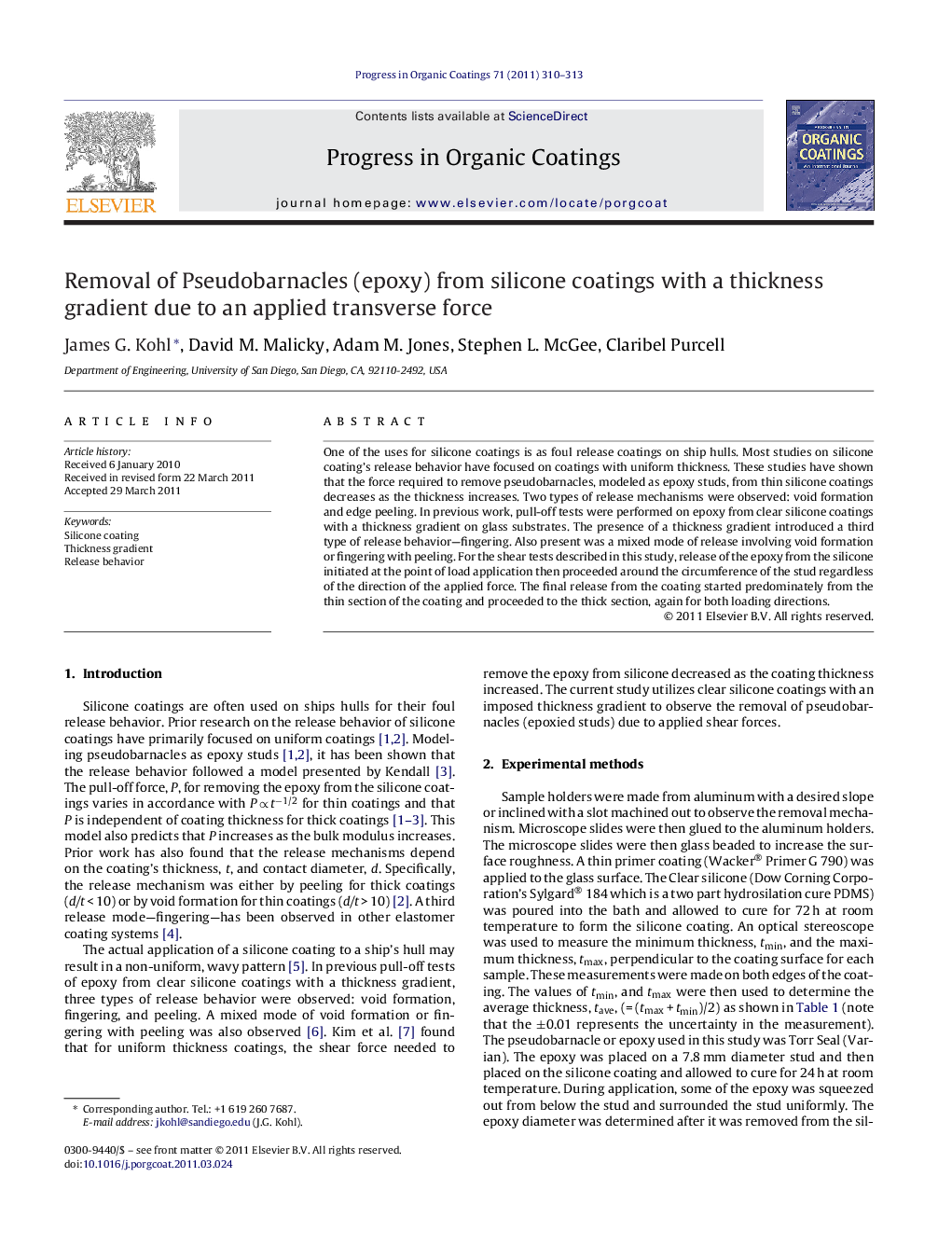| Article ID | Journal | Published Year | Pages | File Type |
|---|---|---|---|---|
| 692982 | Progress in Organic Coatings | 2011 | 4 Pages |
One of the uses for silicone coatings is as foul release coatings on ship hulls. Most studies on silicone coating's release behavior have focused on coatings with uniform thickness. These studies have shown that the force required to remove pseudobarnacles, modeled as epoxy studs, from thin silicone coatings decreases as the thickness increases. Two types of release mechanisms were observed: void formation and edge peeling. In previous work, pull-off tests were performed on epoxy from clear silicone coatings with a thickness gradient on glass substrates. The presence of a thickness gradient introduced a third type of release behavior—fingering. Also present was a mixed mode of release involving void formation or fingering with peeling. For the shear tests described in this study, release of the epoxy from the silicone initiated at the point of load application then proceeded around the circumference of the stud regardless of the direction of the applied force. The final release from the coating started predominately from the thin section of the coating and proceeded to the thick section, again for both loading directions.
► Epoxy removed from a silicone coating with thickness gradient by transverse force. ► Initiation, decohesion around edge, complete decohesion were observed. ► Final decohesion of epoxy was predominately from thin portion of coating to thick.
